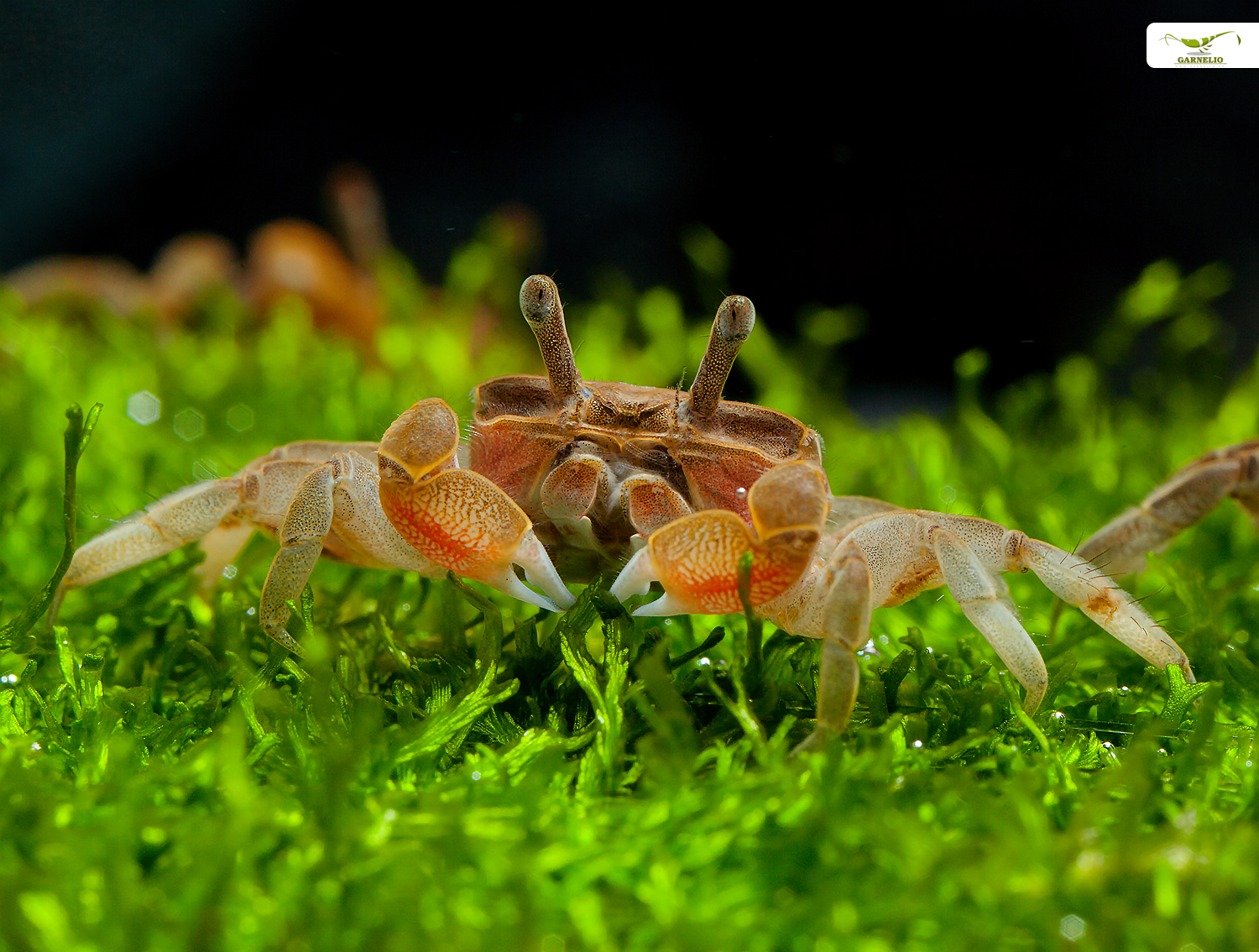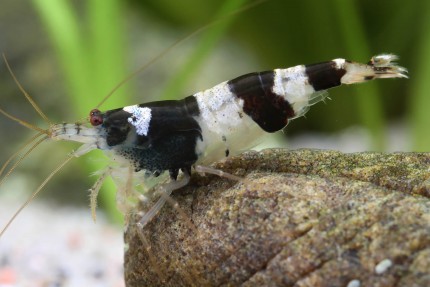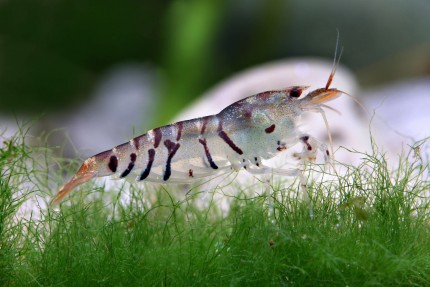Wild beauties from Hong Kong - Galaxy tigers, spot prawns & dwarf crabs
They all have one thing in common: Galaxy Tiger Shrimp, Tiger Shrimp (Caridina mariae), Bumblebee Shrimp and Spotted Shrimp (Caridina serrata) all originate from small, fast-flowing streams in Hong Kong. There they live in different, but quite similar biotopes. The water is everywhere relatively cool, very clean and oxygen-rich and very soft. Water samples in the habitats have consistently shown a total hardness and a carbonate hardness of 0, the pH was correspondingly about 5.5 to 6.5.
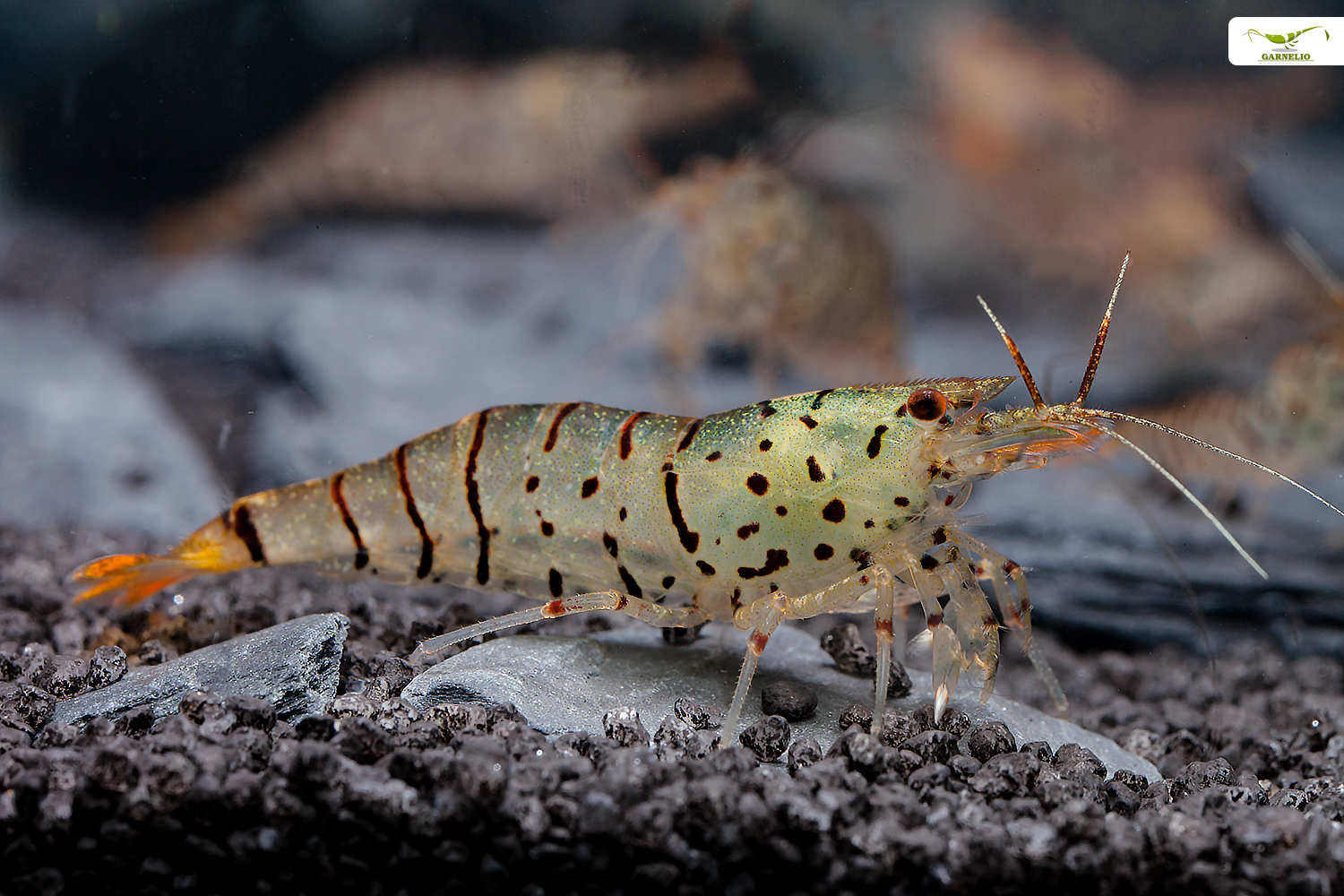 Galaxy tiger shrimp grow larger than normal tiger shrimp and have a very nice pattern.
Galaxy tiger shrimp grow larger than normal tiger shrimp and have a very nice pattern.
Usually there are almost no plants in these streams, the shrimps live there in collections of leaves at the bottom, where they find not only cover, but also food. They feed not only on the foliage or the biofilms on the leaves, but also on insects, insect larvae, algae growth and plant remains that fall into the water from time to time.
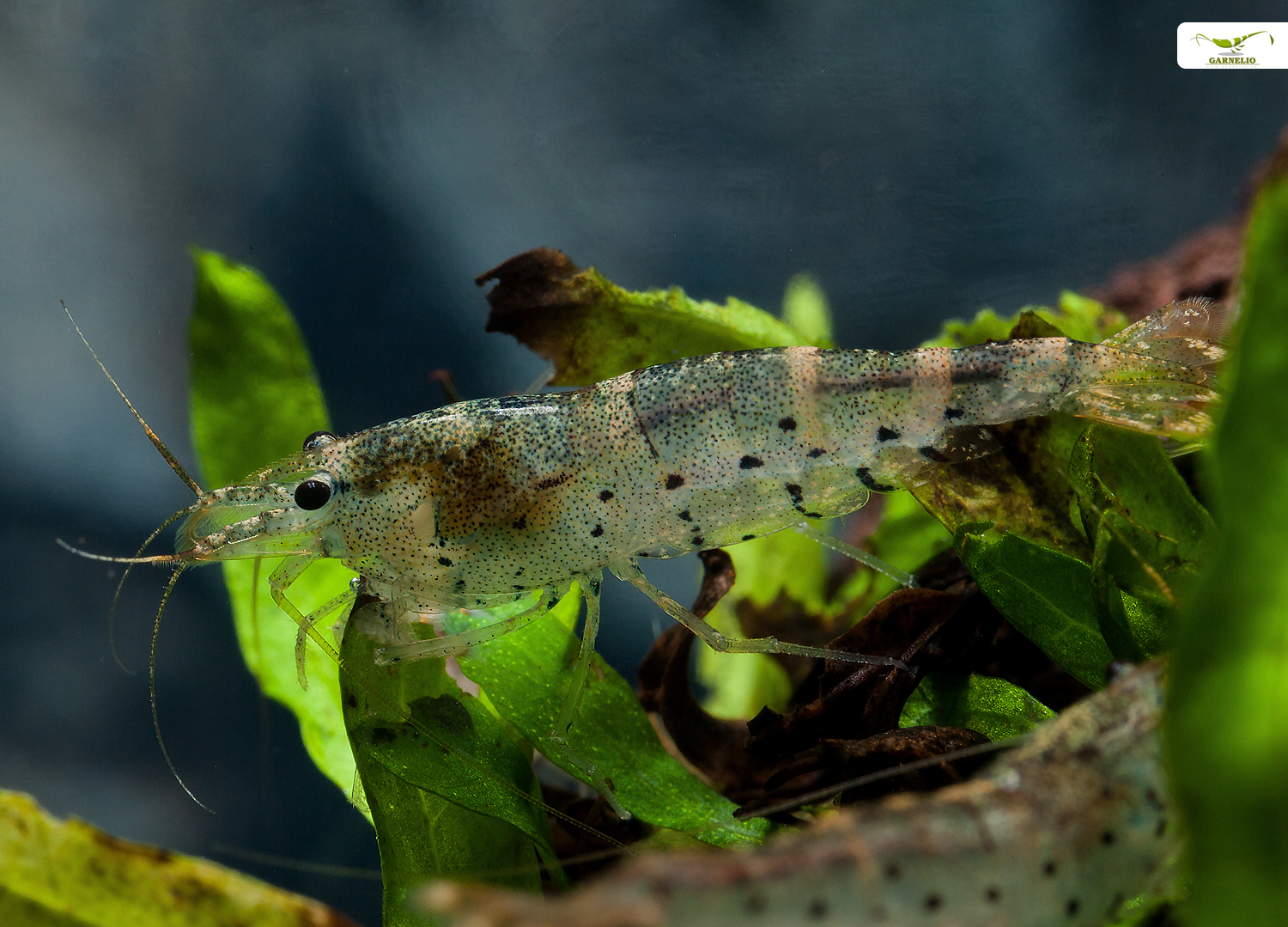 The Hong Kong spotted shr imp still have a beautiful white pattern.
The Hong Kong spotted shr imp still have a beautiful white pattern.
These beautiful dwarf shrimp are usually not offspring, but animals that come from the wild. So they were collected by local catchers in the habitats. In the meantime this process is usually much more gentle, because the catchers are trained and advised, but these shrimps should be treated with special care.
A quarantine is recommended in any case. Freshly imported wild-caught shrimp are usually more stressed than farmed animals due to transport and water change, which can compromise their immune system. The immune system of the dwarf shrimp is not highly specialized anyway, and stress can therefore have fatal effects. The filter in the extra tank should be well run in. It will be disconnected from any existing filter circuit, of course, so that no germs or parasites that may have been brought along can be transferred to the rest of the stock.
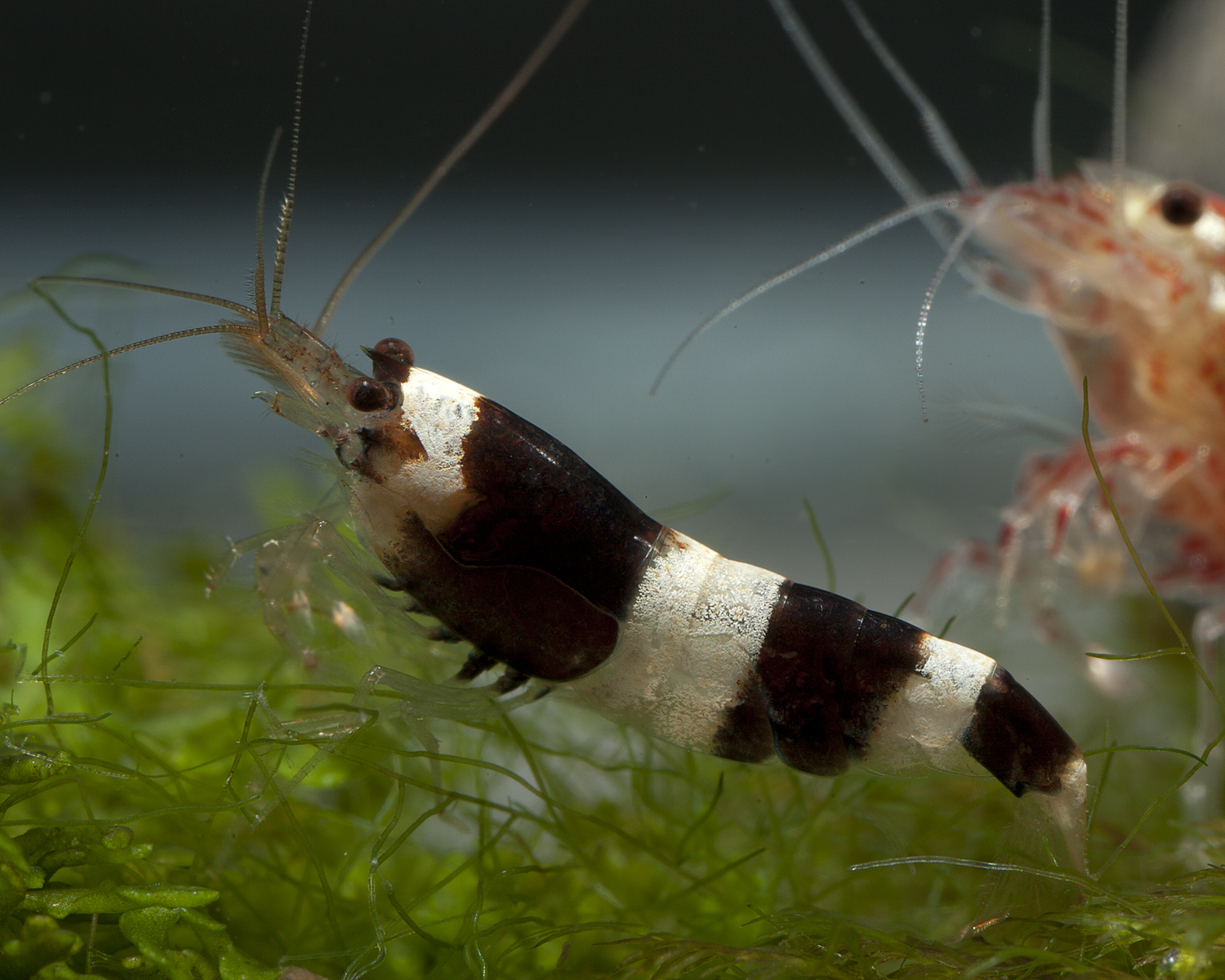 The Surpreme Bumble Shrimp has a beautiful white coloration, almost like Grade A Bee Shrimp.
The Surpreme Bumble Shrimp has a beautiful white coloration, almost like Grade A Bee Shrimp.
The optimal quarantine tank is well laid out. Dense planting is counterproductive if only because it means you can't see potential problems as quickly and therefore can't intervene quite as early. If animals should die or parasites are seen, they must be easy to remove, so elaborate decoration is also not advisable.
The water is best adapted to the values in the habitats, in the case of the freshly imported tiger shrimp, galaxy tiger, bumblebee and spotted shrimp the bee salt from Salty Shr imp is ideal for this. With it you can give the animals a good start right away. Even if the water values on the journey were not always completely optimal, you can compensate a lot with it. A slow adaptation and acclimation is absolutely advisable, so that the dwarf shrimp can adjust to the new conditions.
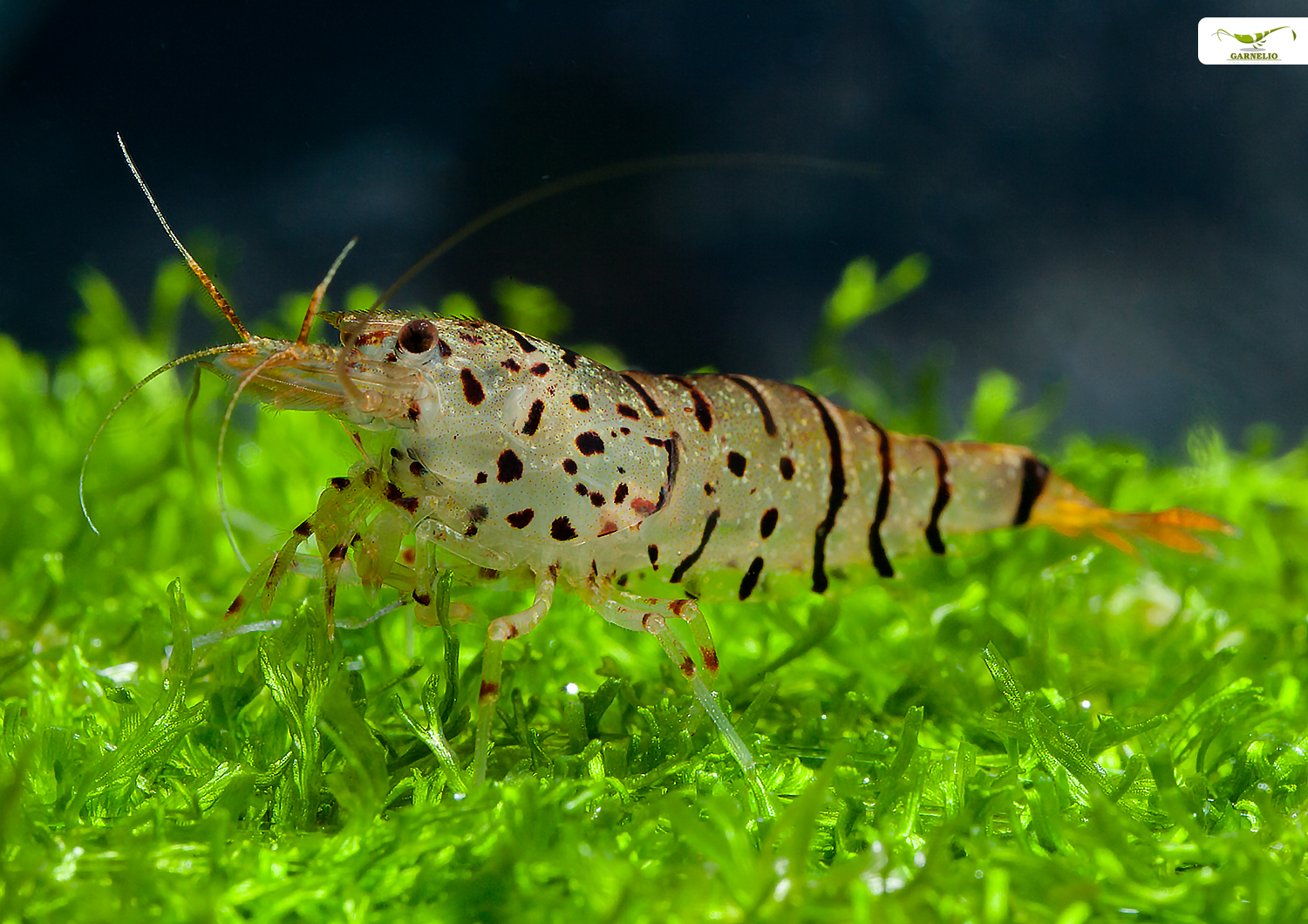
It is best to feed as in nature, wild caught shrimp often do not know artificial food yet. A few properly watered brown autumn leaves are positive in any case, they provide food, cover and at the same time they still improve the water quality by the humic substances present in them and have a very slight antibacterial effect. Ideally, you should give the animals the immune booster Beta Glucan, either pure as a feed powder or as a component of a main feed. The food powder is better absorbed, especially at the beginning, but in nature shrimps are mainly residual feeders, and so the animals quickly learn to take ready-made food as well. If this is the case, then you can also switch to feeding the main food. Not eaten leftovers have to be taken out of the aquarium after a few hours. Dried fennel greens are also a very good antibacterial food that can also be given prophylactically. Dried green walnut foliage is also a good food that can prevent disease, thereby making the transition easier for the shrimp.
If acute diseases do occur, a veterinarian specializing in aquarium animals can help. However, many infections can be counteracted by good aquarium hygiene and high quality food so that they do not break out in the first place.
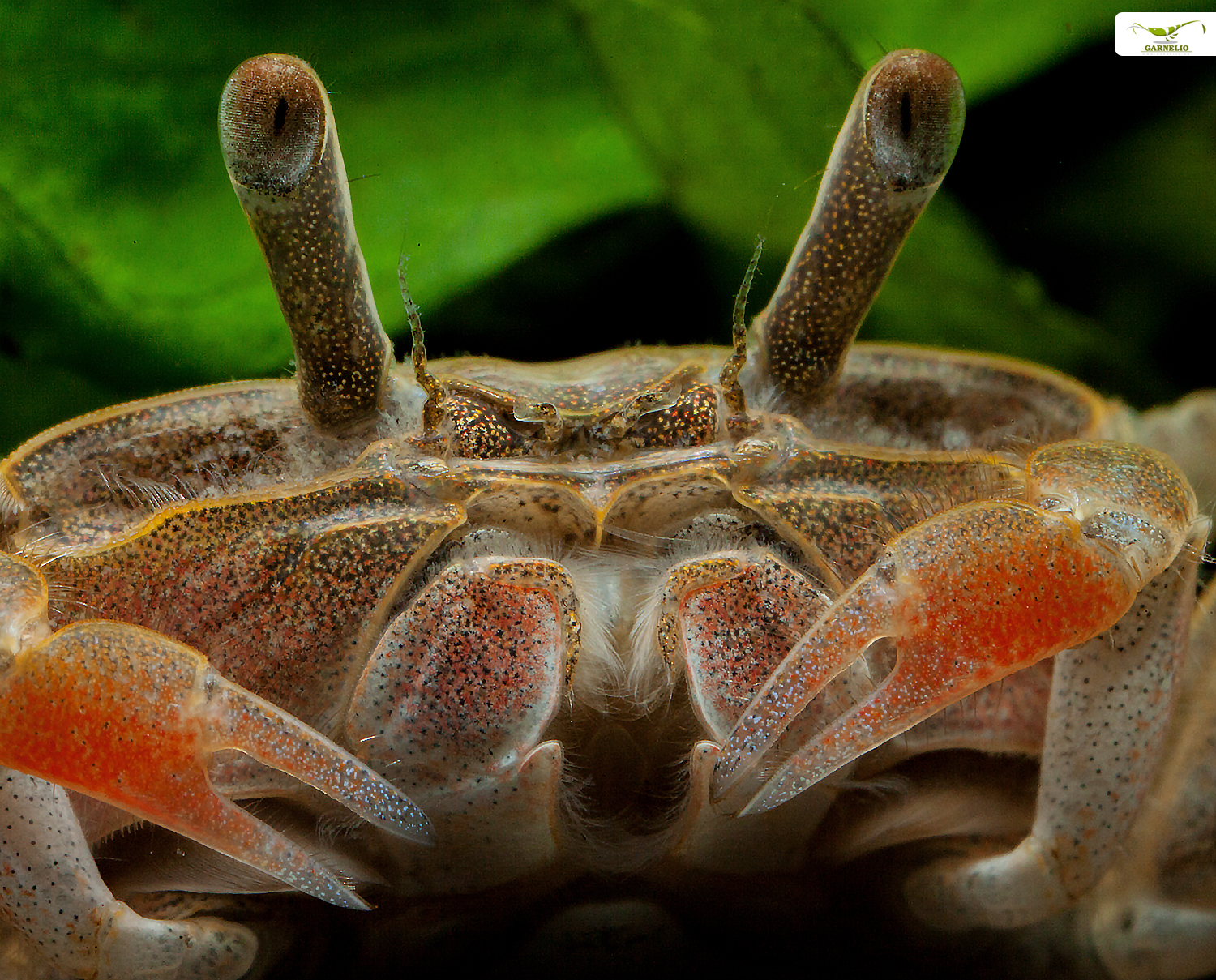 The Hong Kong dwarf crab grows only a few centimeters and can be socialized with dwarf shrimps & Co. without any problems.
The Hong Kong dwarf crab grows only a few centimeters and can be socialized with dwarf shrimps & Co. without any problems.
If the aquarium needs to be changed more quickly and you do not have the time to run in a quarantine tank, you can also change between 50 and 70% of the water daily and suck out the food residues. The fresh water, adjusted to the values in the quarantine tank, should be let in slowly, so as not to stress the animals.
Even in tanks that have been run in, water should be changed regularly and residual food removed. With an attentive owner, high quality food and good aquarium hygiene, wild caught fish usually adapt very quickly to the new conditions.
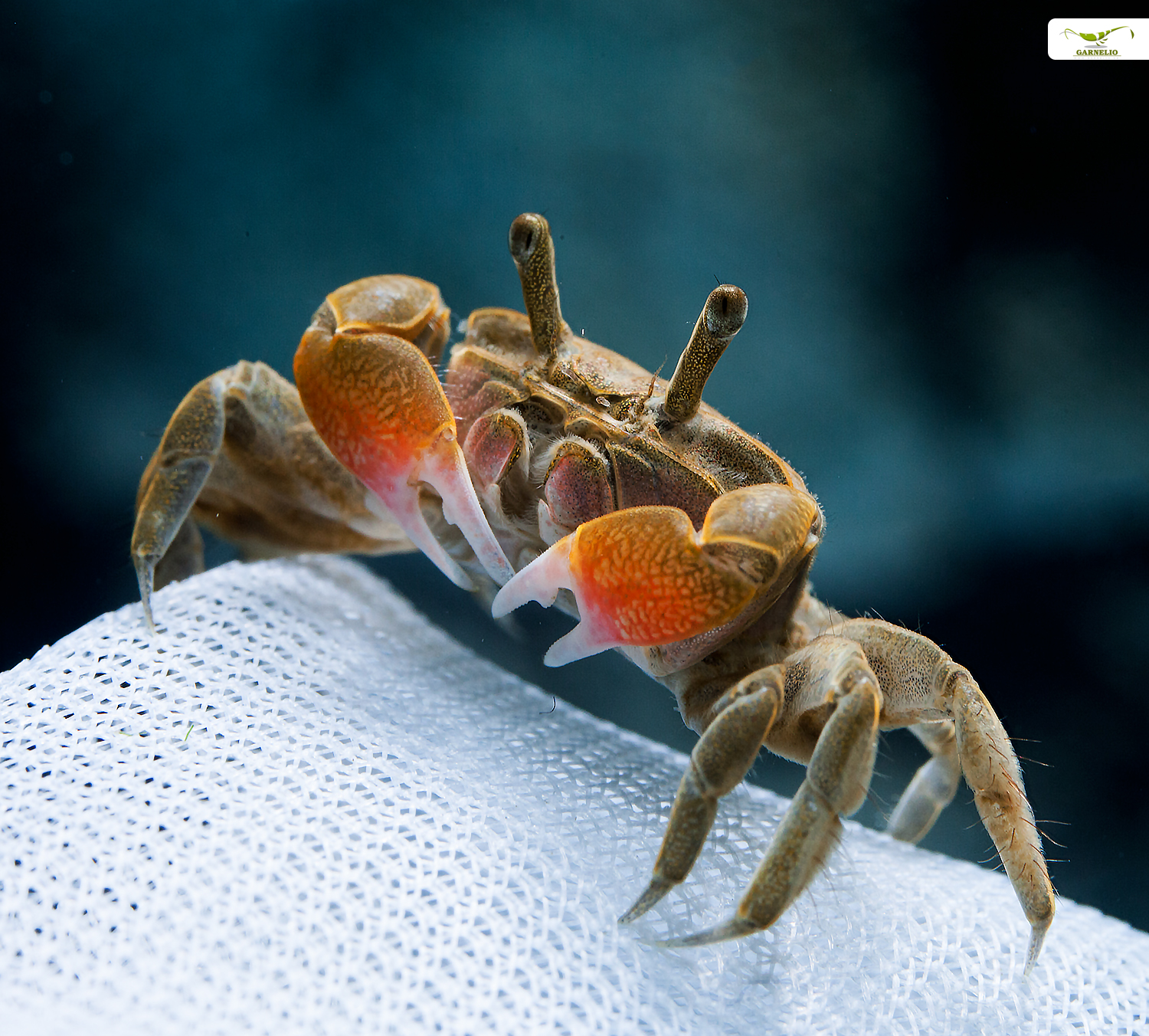
We have also imported a small crab species from Hong Kong that looks quite similar to the fiddler crab. Of course, more or less the same precautions apply to wild-caught crabs as to shrimp that come from the wild - but they usually need a terrestrial part in their quarantine aquaterrarium. We'll go into more detail about these pretty invertebrates in the next blog post.
